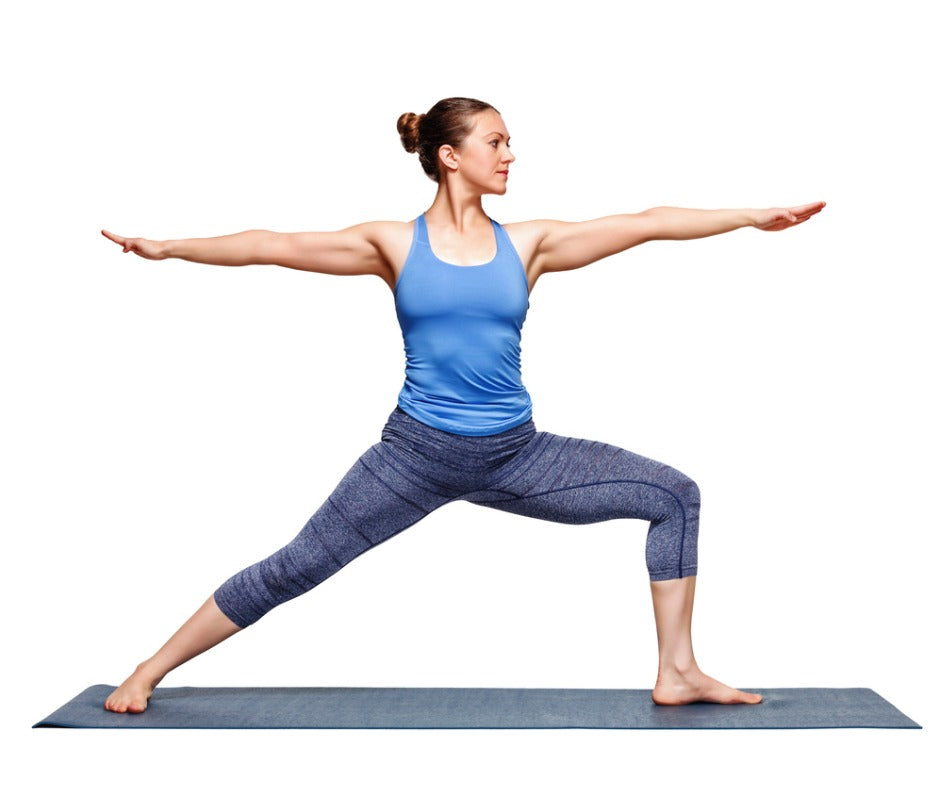While there may be some similarities, the fact is that Yoga and Pilates are two completely separate disciplines. The question lingers however, what is the difference between Yoga and Pilates?
To get an idea of the key difference between Yoga and Pilates, we asked our in-house Yoga expert Chris Walsh for his views on what the Pilates and Yoga difference is.
“Well, you’d get different answers from just about any Pilates teacher or similarly any Yoga teacher”, says Chris when quizzed about the difference between Yoga and Pilates, “So let’s take an overview of each and see where they cross over and where there are noticeable differences”.
Intrigued by this we asked Chris to expand his views on what is the difference between Yoga and Pilates.
What is Pilates?
Pilates originates from Joseph Pilates (1883 to 1967) who enjoyed and saw the benefit of linking the mind, through concentration to physical exercise. Core work and spinal alignment are key aspects. Pilates is often mat based though also employs large rack type equipment called reformers to strengthen and rehabilitate the body. There are several types of Pilates, Winsor, Stott, Contemporary, Classical, Clinical, Reformer among others. We’ll focus on mat based as we’re looking at differences between two bodyweight, floor based, ‘exercise’ types.
For those looking to become certified Pilates instructors, YMCA Awards offers a variety of courses that will help you develop the skills needed to teach Pilates effectively.
What are some examples of Pilates exercises?
- Hundred - Beating the arms 100 times while holding a supine hollow hold
- Roll Up. Slow and controlled supine roll curling the body from the floor to a seated forward fold.
- Roll Over. Dynamic supine, legs over chest, feet toward the floor
- One Leg Circle. Supine single vertical leg circles
- Rolling Back (rolling like a ball).
- One Leg Stretch. Dynamic glute stretch with core engagement
- Double Leg Stretch. Dynamic core engagement with both legs
- Spine Stretch. Dynamic seated spine flexion
What is Yoga?
Yoga has an ancient history; origination in Ancient India / Tibet and still uses the old language ‘Sanskrit’. Traditional teachers wouldn’t be impressed with classifying Yoga as exercise!
Modern day instructors typically select from a diverse range of body weight movements, breath work, meditation, holistic healing and more. There are also multiple styles of Yoga, including but not exclusively Hatha, Vinyasa, Kundalini, Iyengar, Astanga and Bikram.
To further develop your yoga training, CIMSPA provides resources and certifications that help you grow as a professional in the wellness and fitness industry.
What are some examples of Yoga exercises?
Basic Yoga poses, names and brief descriptions.
- Mountain Pose. Sanskrit: Tadasana. Standing tall and still and strong
- Chair Pose. Sanskrit: Utkatasana. Holding a half squat
- Downward-Facing Dog. Sanskrit: Adho Mukha Svanasana. Holding an inverted V Hands and feet on floor
- Warrior II. Sanskrit: Virabhadrasana II. A wide lunge variation, holding strong and still
- Triangle Pose. Sanskrit: Trikonasana. Standing, holding a lateral torso flexion.
- Tree Pose. Sanskrit: Vrksasana. Standing one leg balance, engaging core.
- Bridge Pose Sanskrit “Setu Bandha Sarvangasana” Also in Pilates but held for breath counts in Yoga
What are the differences between Yoga and Pilates?
- As we can see at first glance, Pilates is more dynamic.
- Pilates is energetic using the limbs to engage the core, brining heat into the body whereas Yoga alongside energising the body seeks to calm and soothe the mind.
- Pilates is very much trunk or core engagement compared to Yoga.
- Typically Yoga practice (sessions) are longer in duration than Pilates sessions.
- Both styles encourage inhalation through the nose though Pilates encourages exhalation through the mouth.
- Both Pilates and Yoga move through breath and body positions, in Pilates the body positions and repetitions are repeated more than once between 2 or 3 postures.
- The body moves constantly between postures in Pilates, whereas in Yoga you are typically encouraged to hold a posture.
- Pilates strengthens and tones whereas Yoga strengthens and improves flexibility.
- In Yoga the focus is more in the joints than Pilates
Summary - What is the difference between Yoga and Pilates?
Thank you, Chris. As we have seen there is certainly a difference between Yoga and Pilates but also some similarities - with both practices improving strength, balance, awareness, connection with the breath, body and mind and both have multiple physical and mental benefits.
Interested in putting these into practice? Chris says “Have a try of each, sample different teachers and different styles. Find the one, or more that suit you, that challenges you appropriately and where you feel comfortable and safe” – just make sure you are doing this under the guidance of a qualified professional like Chris.
To find out how to work in the fitness industry please visit the Study Active website here.
Reference
Chris would like to credit the following website which has helped him with formulating his ideas regarding the Pilates and Yoga difference.
www.tummee.com







